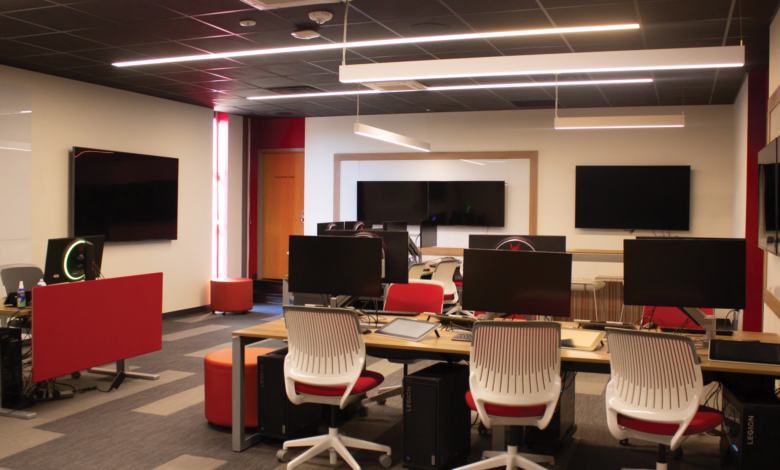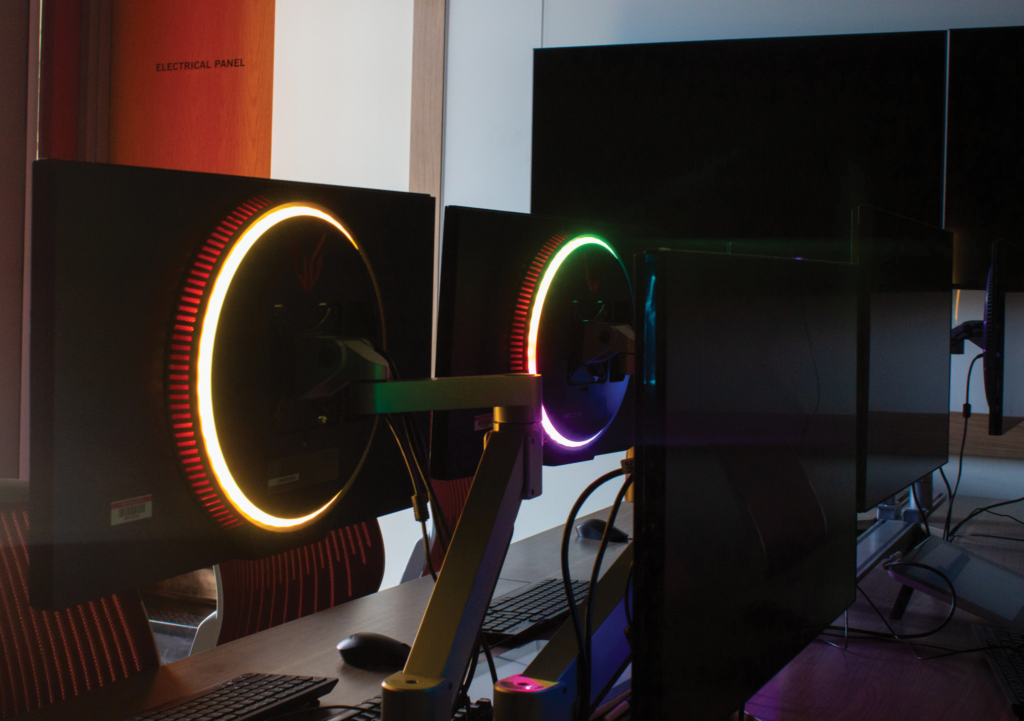
Game design lab keeps up with evolving technology
By Hannah Newman
When walking into the game design classroom on the second floor of Fine Arts, new, rainbow-radiating PC setups crowd the desks, much different than the older Macs there last semester.
Over winter break, Rider’s Office of Information Technologies installed state-of-the-art computers built for the creation of virtual worlds, each of the 19 towers costing the university $64,000, according to Vice President for Facilities and University Operations Mike Reca.
“To keep up with game design, we have to keep up with technology,” said Reca.
The lab inhabits not only game designers, but film and television majors and other multimedia students, with a plethora of classes offered in the space.
Faculty found that the old Mac desktops took too long to render, or create student projects, according to Chief Information Officer Moe Rahman.
As a result, the administration focused on having the proper technology for what they need to complete in the classroom.
Rahman and Wil Lindsay, program director of game and interactive media design, decided to look into improving the program that was newly launched at Rider in 2019.
“We started looking at it and realized that the Mac machines were not fit for the kind of tasks that [game design majors] are asked to do,” said Rahman.
Rahman commended OIT’s resource manager, who he explained was instrumental in the effort. He researched what other universities
are doing for their game design lab and what platforms they’re using, which was when it was recommended to move to PC instead of Mac.

“We took a test route rather than trying to invent something that doesn’t need to be invented,” said Rahman.
The new machines required a lot more power than the Macs, which meant that the lab needed an electrical update.
The PCs took up all of the room’s electrical output, leaving no space for students to charge their phones and laptops, according to Reca.
“We had to increase the electrical capacity in a number of amps and put a subpanel in which is a panel run from the main panel in the building just for the space [the lab] itself,” said Reca. “This was an enhancement of not only the equipment but of the capacity of power to better serve the students.”
According to professor Stephen Gonzalez, Macs were never built with game design in mind, which is why making games for platforms like Nintendo and PlayStation is easiest on PC.
“Even when Steve Jobs was creating Apple, he never really liked video games. That culture still exists which is why when you go on a Mac there aren’t really games on it, a lot of them are limited to the iOS software,” said Gonzalez.
The improvements toward game design education has already enhanced the student experience, according to sophomore game design major Alexander Falcone.
“The computers allow us to use programs that are actually used in the industry,” said Falcone. “We can use software that is just more powerful, even some that are used in Xbox.”


